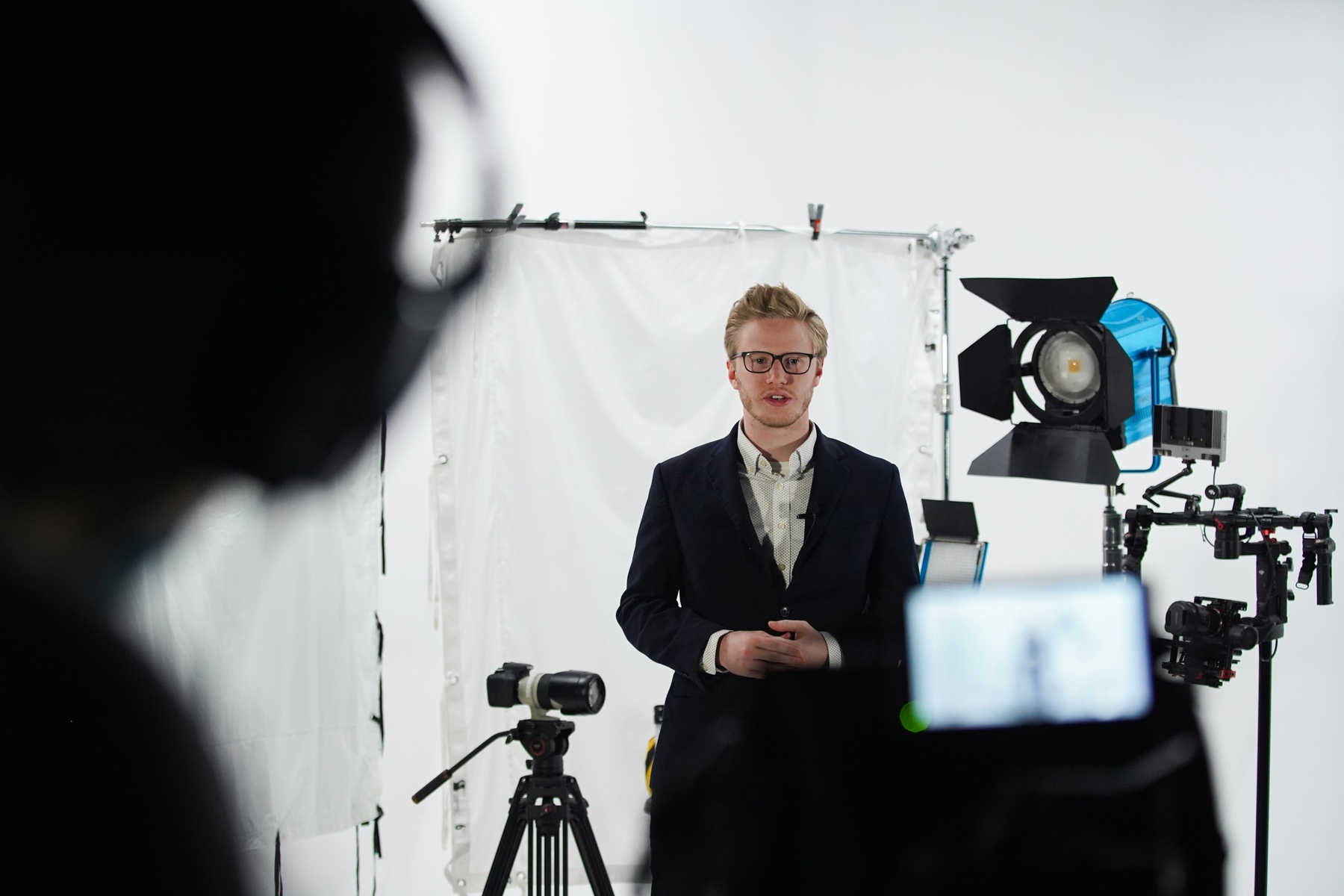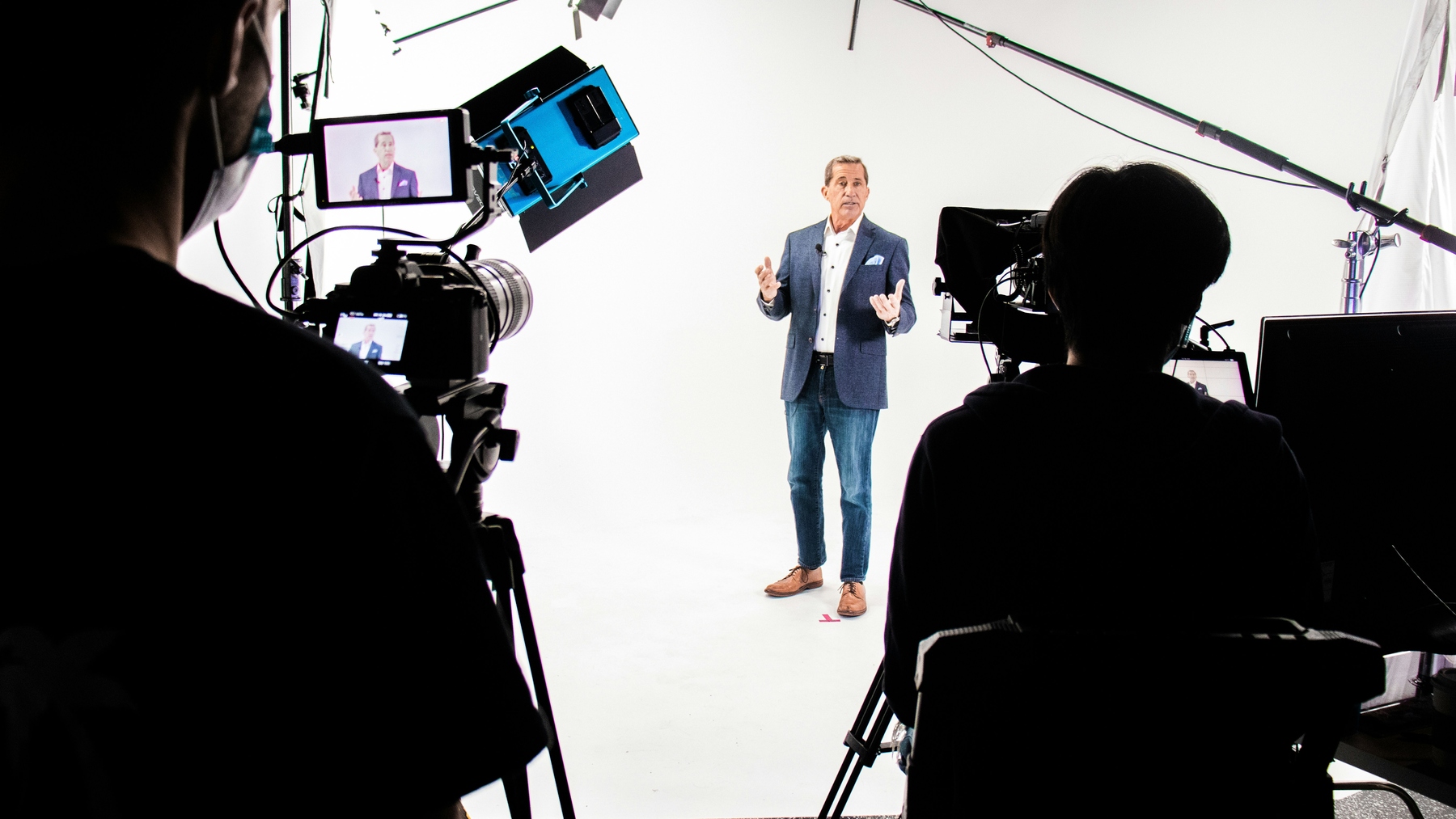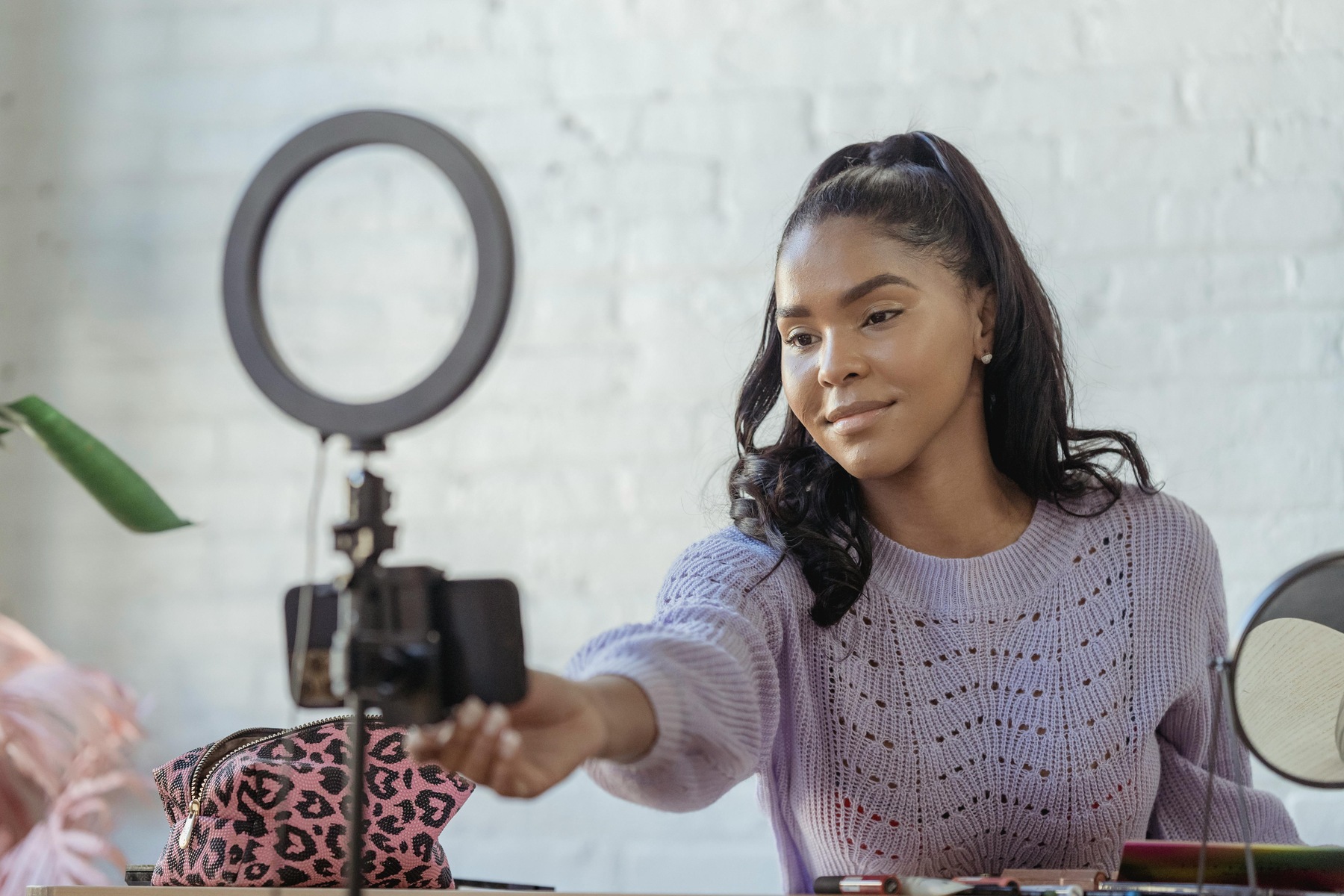Speaking on camera can be pretty tough especially if you’re just starting out. It’s a skill that takes practice and knowing what mistakes to avoid when speaking live on camera. If you’re looking for some advice on getting better at this, then you’ve come to the right place. Here are 8 mistakes to watch out for while speaking live on camera!
8 Mistakes to Avoid When Speaking Live on Camera
With the end goal of engaging an audience you can’t see, speaking live on camera can be challenging. However, there are ways to make it easier. Given that the image you present on camera is open to interpretation, you want to make sure you’re perceived seriously and professionally. To come across as confident and engage your audience, here are some key mistakes to avoid:
Lack of Eye Contact With the Camera
Eye contact is your silent handshake with the audience when speaking live on camera. It’s how you convey sincerity and confidence and engage with viewers as if they’re in the room with you. Lack of eye contact can leave your audience disengaged or give the impression that you’re not fully present in the conversation.
To maintain a connection with your audience, you should look directly into the camera lens. This simulates the effect of making eye contact in a face-to-face conversation, thus creating a more personal and immersive experience. Remember, when you lock your eyes with the camera, you lock in your audience.
If you struggle with maintaining eye contact with the camera, consider using the 3-second rule, a helpful guideline for looking at the camera for short bursts of time. You might feel tempted to glance away; however, stay focused – the camera lens is your conduit to the audience.

Awkward or Not Enough Gesturing
When you’re in front of the camera, it’s vital to remember that your body language speaks almost as loudly as your words. Gestures are key in communication, yet they are often overlooked during live camera presentations. Here’s why they matter:
- Gestures can emphasize and reinforce what you’re saying, making your message more compelling and easier to understand.
- Animated expressions and hand movements grab attention, helping your audience stay focused and interested.
- People tend to remember visual information; gesturing can make your key points more memorable.
To integrate gestures effectively, practice using natural gestures you’re already comfortable with—they’ll appear more genuine. Also, align your gestures with your message. Keep your shoulders loose and avoid stiff movements. This helps your gestures flow more naturally.
Remember, gestures are part of your communication toolkit. Use them to articulate your message and infuse energy into your delivery.
Paying Little or No Attention to Your Outfit
When you’re presenting on camera, what you wear is a visual signal of your professionalism and brand. It’s important to dress appropriately for the occasion; your clothing choices should enhance your credibility, not detract from it. For instance, if you’re delivering a business presentation, opt for smart attire that reflects your professionalism.
Avoid loud colors and busy patterns that can be distracting on screen. Solid, neutral colors usually work best. Choose outfits that contrast well with your background to stand out to your audience. Make sure your clothing is comfortable. Uncomfortable outfits might affect your posture and delivery.
It’s not just about looking good; how you dress can impact how you feel. When you know you look appropriate and professional, that confidence will come through in your speech. Remember, your attire should complement the message you’re conveying.
Not Being Authentic
Being authentic on camera means you’re being yourself and not trying to embody or copy someone else. This is a common mistake among presenters, especially if they have a mentor or model who’s successful in their own right. One could assume that simply copying their style could provide the same results in terms of, say, their confidence and fluidity when speaking.
However, the best you’d probably do is a less convincing version of them. And since you’re not being yourself, it would feel like playing a character. Being authentic gives you the freedom to create your own style and tone and generally feel like yourself.

Authenticity is a quality that shows on camera, too. We recommend leaning into your personality. For instance, if you’re a fun-loving person, don’t portray yourself as an overly serious person.
Underestimating the Power of a Smile
People who smile often appear open and friendly, and this applies on camera as well. A smile allows you to come across as someone with a positive attitude, making you more likable. When you smile at the camera, your audience interprets this as an invitation to make a connection.
It also helps you appear more relaxed even if you have only a bit of a smile playing around the corner of your lips. Note that smiling may not always be appropriate, especially in cases when you’re talking about a serious issue.
Using an Unprofessional Setup and Background
A cluttered or unprofessional background can distract your audience or even affect their perception of you. A clean and organized space reflects well on you and can hold your audience’s attention.
Be mindful of what is visible in your camera’s frame. A neutral background or minimal aesthetic can help prevent distractions and focus the attention on you and your message. Lighting also plays a critical role. Make sure you’re in a well-lit space, preferably with natural or soft artificial lights, to avoid harsh shadows or an unflattering appearance.
Check for sound quality because background noise can be quite disruptive. Use a good microphone, and make the space as quiet as possible during your live appearance. Remember, while your content is paramount, your viewers’ experience is also shaped by the visual and auditory setup you provide.
Not Rehearsing Enough
Unless you’re a seasoned professional, it’s extremely important to rehearse before speaking live on camera. Without practice, you risk speaking too quickly or mumbling, making it difficult for your audience to grasp your message. Familiarizing yourself with your content allows natural gestures that complement your words rather than uncoordinated or distracting movements.
Practicing builds confidence, which translates into a more credible and persuasive presentation. You can rehearse aloud in an environment similar to where you’ll be on camera. Use a mirror or record yourself to get used to speaking to a lens instead of a person. Pay attention to your tone, pacing, and volume.
Remember, each practice session is an opportunity to enhance your camera presence and make sure your message is heard and felt. Also, be sure to have thoroughly researched the topic you want to discuss. While over-planning can lead to analysis paralysis, a total lack of preparation could be detrimental, too. Have a clear outline to smooth out your delivery.
Ignoring Audience Engagement
Imagine speaking to a friend; you instinctively adjust your tone, speed, and body language to keep them interested. Similarly, when you’re live on camera, it’s imperative to focus on audience engagement. This means understanding their needs, addressing their queries, and making them feel involved and connected.
Forgetting to make your broadcast about the audience can lead to disconnection, making viewers feel like passive observers rather than active participants. Remember, the viewers are looking to gain value from your content. Whether you’re providing information, entertainment, or both, the goal is to craft a personal conversation with the viewer.
Your body language speaks volumes. Maintain eye contact with the camera to simulate eye contact with your viewer. Combine expressive gestures and changes in facial expressions to underline important points and add an element of dynamism to your delivery. Remember, your authenticity is your greatest asset when engaging digitally.
Related Questions
How Can I Look More Natural on Camera?
To appear more natural on camera, practice your content ahead of time to increase confidence. Position the camera at eye level and maintain “eye contact” with the lens to establish a connection with your audience. Small gestures can add a human touch; however, be mindful not to overdo them, which can be distracting.
What Should I Wear When Presenting on Camera?
Choose solid colors that contrast well with your background—avoid stripes or intricate patterns, as they can create a distracting visual effect on screen. Make sure your outfit is comfortable and reflects your message; you want to enhance your presentation, not distract from it. Prepare your outfit well ahead of time so there’s no last-minute rush.
How Can I Improve My Voice Quality on Camera?
Warm up your voice before going live and focus on articulation and clear pronunciation to keep your speech understandable. Monitor your pacing and use inflections to emphasize key points. It’s also recommended to stay hydrated to help your voice sound clearer and reduce the chance of vocal strain.
Conclusion
Live presentations via camera can be nerve-wracking; however, with a few strategic moves, you can present more confidently. Remember to rehearse thoroughly to guarantee a smooth delivery and don’t forget the importance of a technical run-through before going live. This helps avert unwanted surprises.






